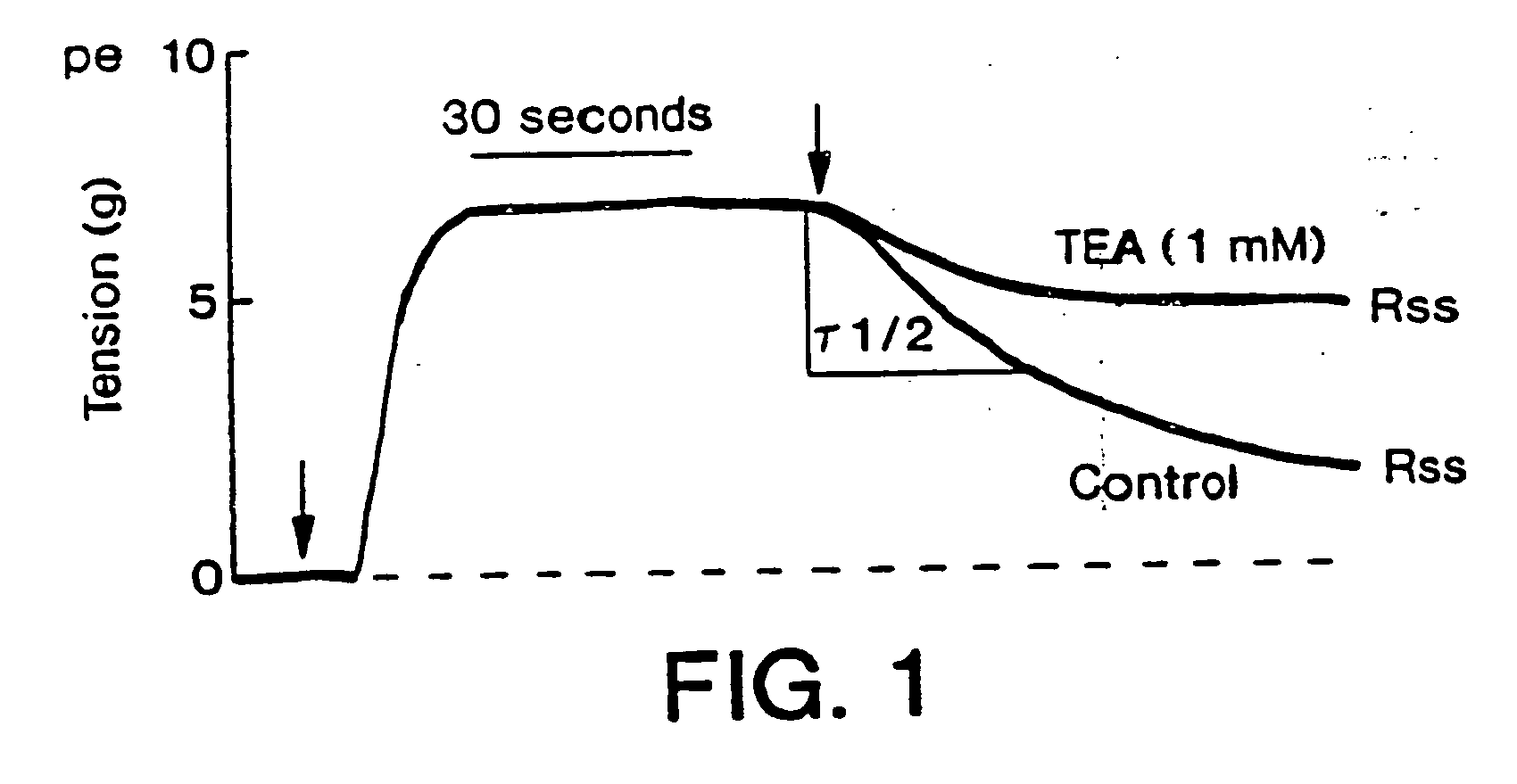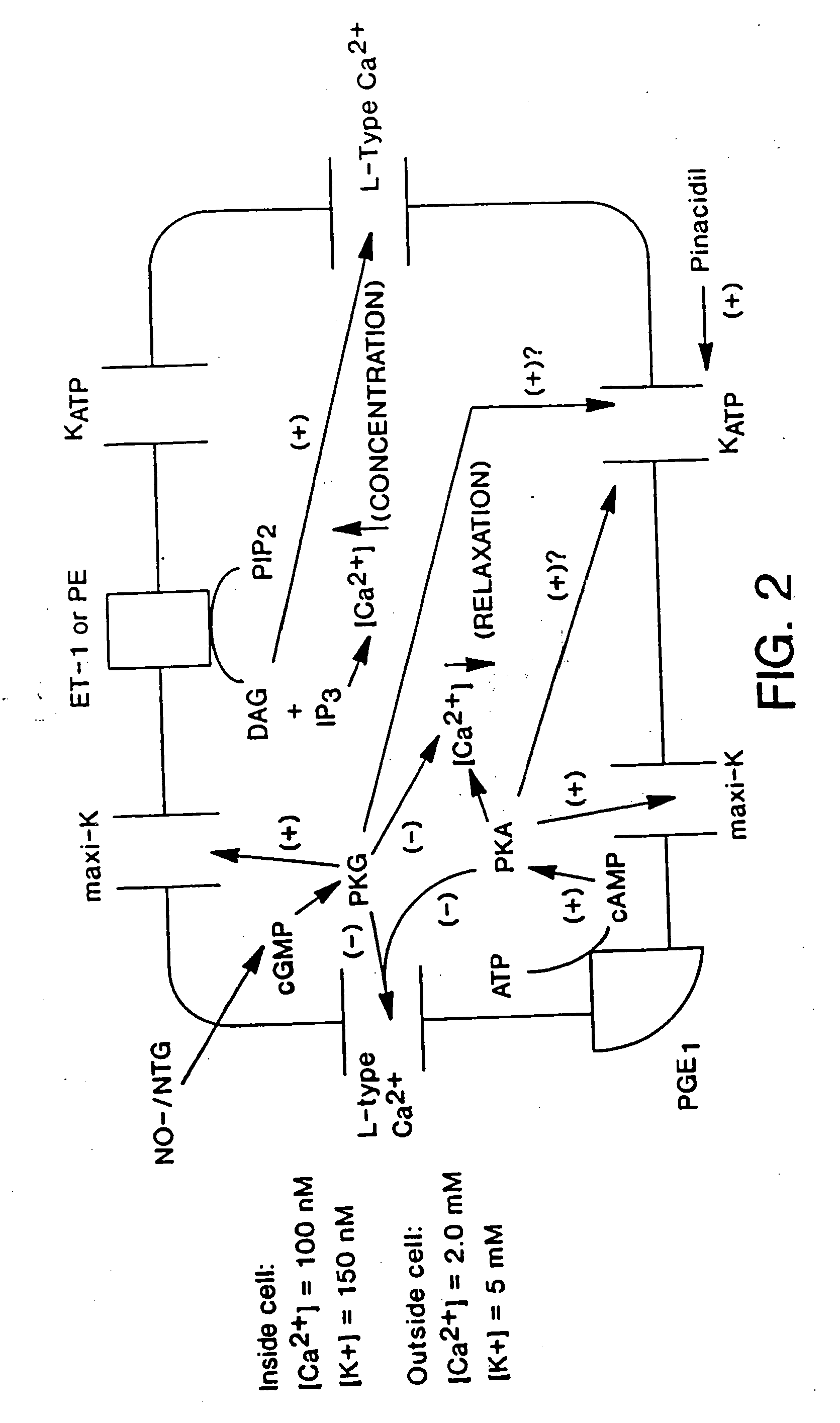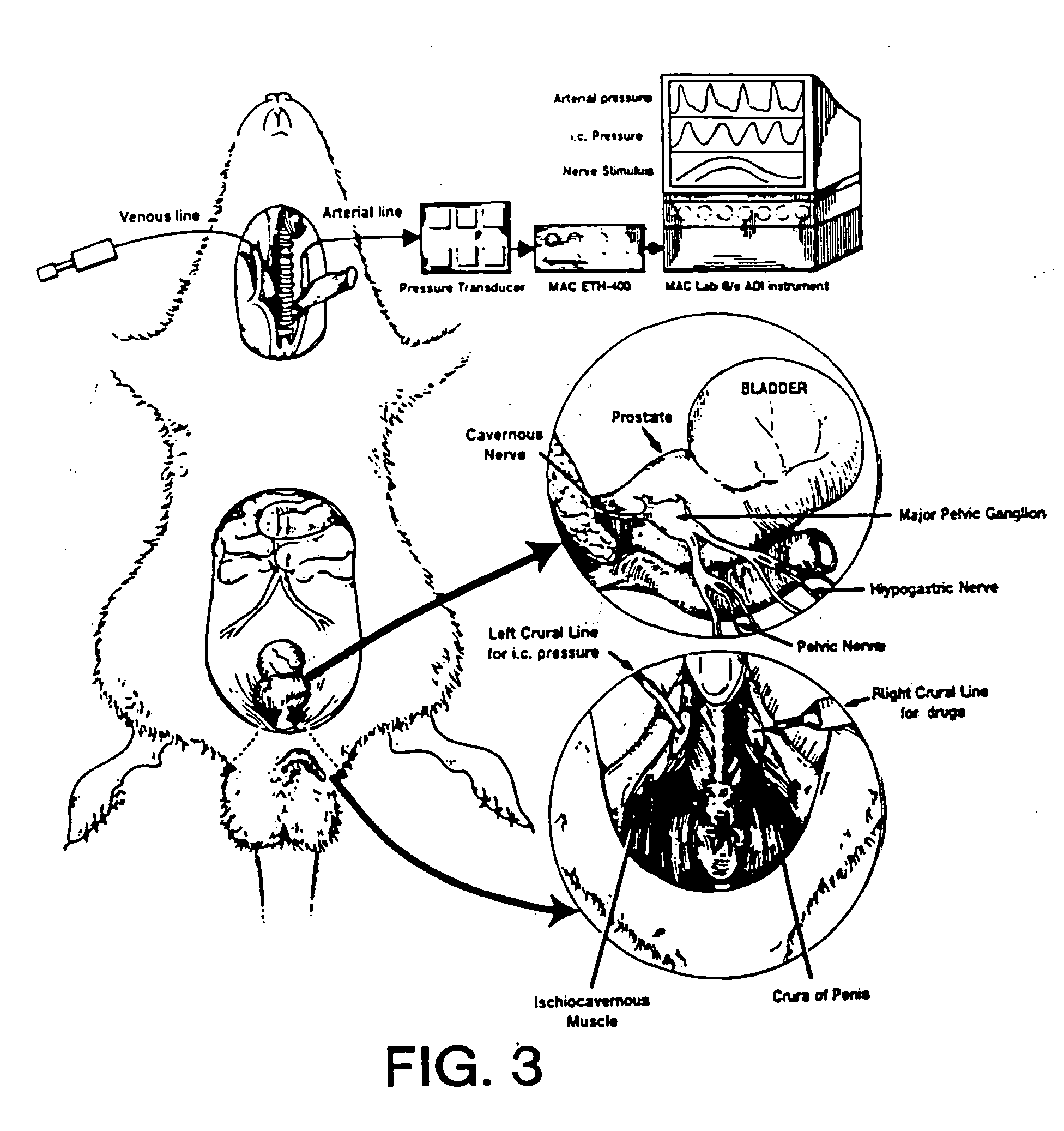Gene therapy for regulating smooth muscle tone
a gene therapy and muscle tone technology, applied in the field of gene therapy for regulating smooth muscle tone, can solve the problems of limited overall success, inconvenient use, and non-specific current therapies, and achieve the effects of restoring smooth muscle tone, modulating smooth muscle contraction, and enhancing smooth muscle contraction
- Summary
- Abstract
- Description
- Claims
- Application Information
AI Technical Summary
Benefits of technology
Problems solved by technology
Method used
Image
Examples
Embodiment Construction
[0044] The present invention provides a method of gene therapy for treating physiological dysfunctions of smooth muscle through the delivery into, and expression in, a smooth muscle cell of a DNA sequence encoding a protein involved in the regulation of smooth muscle tone. As used herein, “regulation” is the modulation of relaxation or the modulation of contraction.
[0045] Examples of smooth muscle cells for which the present method of gene therapy may be used include, but are not limited to, visceral smooth muscle cells of the bladder, bowel, bronchi of the lungs, penis (corpus cavernosum), prostate gland, ureter, urethra (corpus spongiosum), urinary tract, and vas deferens, as well as the smooth and / or skeletal muscle cells of the endopelvic fascia. Specifically, the claimed method of gene therapy may be used in bladder smooth muscle cells, colonic smooth muscle cells, corporal smooth muscle cells, gastrointestinal smooth muscle cells, prostatic smooth muscle, and urethral smooth ...
PUM
| Property | Measurement | Unit |
|---|---|---|
| transjunctional voltage | aaaaa | aaaaa |
| transjunctional voltage | aaaaa | aaaaa |
| transjunctional voltage | aaaaa | aaaaa |
Abstract
Description
Claims
Application Information
 Login to View More
Login to View More - R&D
- Intellectual Property
- Life Sciences
- Materials
- Tech Scout
- Unparalleled Data Quality
- Higher Quality Content
- 60% Fewer Hallucinations
Browse by: Latest US Patents, China's latest patents, Technical Efficacy Thesaurus, Application Domain, Technology Topic, Popular Technical Reports.
© 2025 PatSnap. All rights reserved.Legal|Privacy policy|Modern Slavery Act Transparency Statement|Sitemap|About US| Contact US: help@patsnap.com



